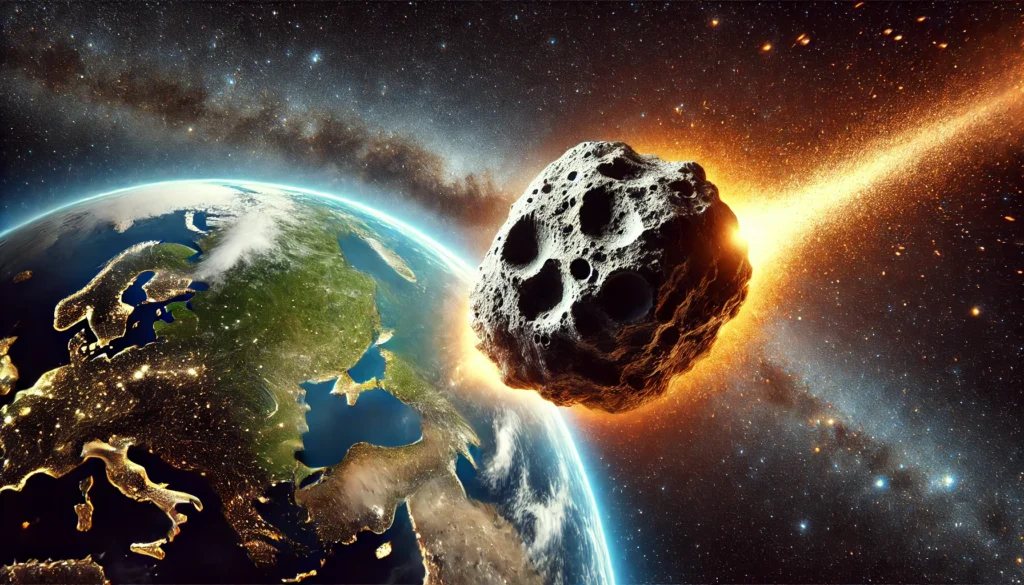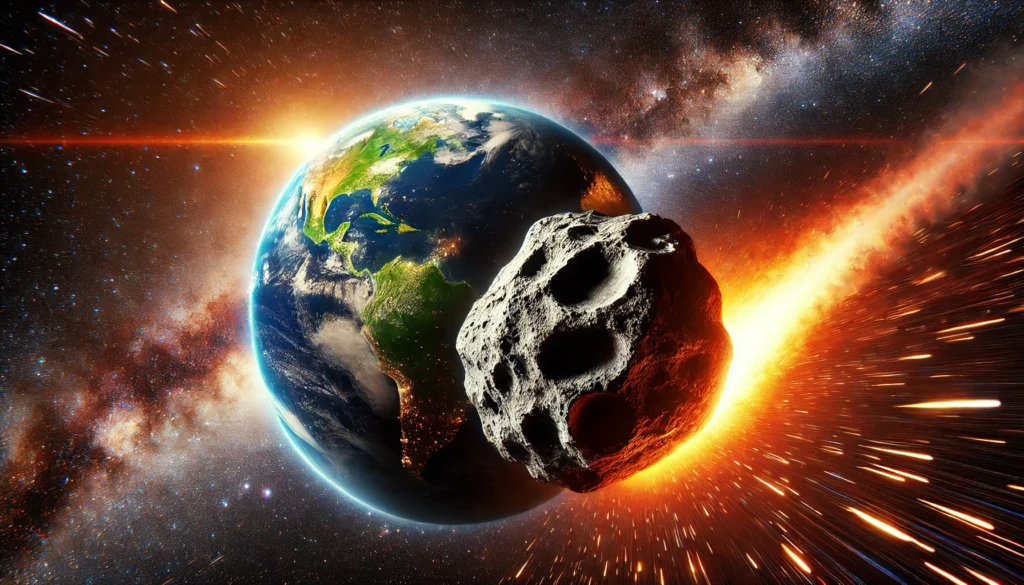Published: April 13, 2025 ✍️ By: Global Space & Science Desk 🌐 Source: GlobalWorldCitizen.com
 Cosmic Countdown: Apophis Asteroid to Skim Earth on April 13, 2029
Cosmic Countdown: Apophis Asteroid to Skim Earth on April 13, 2029
Exactly four years from today, on Friday, April 13, 2029, the world will witness a rare astronomical event as asteroid 99942 Apophis — nicknamed the “God of Chaos” — makes an extraordinarily close flyby of Earth.
Although it will not collide with the planet, its proximity to Earth — closer than many satellites — is a wake-up call for humanity, and a defining moment in the future of planetary defense, space science, and global preparedness.
 What Is Apophis and Why Is It a Global Concern?
What Is Apophis and Why Is It a Global Concern?
Size: ~1,100 feet wide (~340 meters) — comparable to the Empire State Building
Proximity: Will pass just 20,000 miles (32,000 km) from Earth — closer than geosynchronous orbit
Visibility: Easily visible to the naked eye for up to 2 billion people in Africa and Europe
“On April 13, 2029, all of Earth will be watching.”
— Richard Binzel, MIT scientist and creator of the Torino Impact Scale
 A Critical Moment for Global Planetary Defense
A Critical Moment for Global Planetary Defense
Although Apophis poses no direct threat in 2029, scientists warn that such close encounters can alter an asteroid’s future trajectory due to Earth’s gravitational pull. This makes Apophis an unprecedented opportunity for data collection, risk modeling, and future impact mitigation strategies.
 Global Space Agencies Mobilized:
Global Space Agencies Mobilized:
NASA and ESA are preparing real-time tracking and post-flyby observation campaigns
Scientists are building advanced radar, telescope, and orbital monitoring systems
Dozens of universities and observatories will collaborate to model future asteroid risks
 Apophis Missions: Science in Motion
Apophis Missions: Science in Motion
 NASA OSIRIS-APEX (Apophis Explorer)
NASA OSIRIS-APEX (Apophis Explorer)
Scheduled to rendezvous with Apophis post-flyby in 2029
Will orbit and study the asteroid through 2030 to assess any gravitational or structural changes
 ESA RAMSES Mission
ESA RAMSES Mission
Launching in 2028, arriving just before Apophis passes Earth
Will provide essential data on gravitational interactions to help test future asteroid deflection technologies
 Can Humanity Stop a Future Apophis Impact?
Can Humanity Stop a Future Apophis Impact?
Yes — and we’ve already started. In 2022, NASA’s DART mission successfully demonstrated asteroid deflection by impacting a small moonlet at over 15,000 mph. This mission proved it’s possible to redirect an asteroid’s path, marking a major breakthrough in planetary defense systems.
Notably, Apophis was a primary inspiration behind DART, signaling just how seriously scientists are taking this celestial giant.
 Apophis 2029: A Once-in-a-Millennium Scientific Event
Apophis 2029: A Once-in-a-Millennium Scientific Event
High-precision radar mapping during and after the flyby
International data-sharing across scientific communities
A live natural experiment in gravity, trajectory dynamics, and space risk modeling
At the Apophis T–4 Years Conference in Tokyo, global experts called the 2029 event:
“A once-in-a-thousand-year scientific opportunity to study near-Earth objects up close.”
 GlobalWorldCitizen.com Insight: A Message from the Cosmos
GlobalWorldCitizen.com Insight: A Message from the Cosmos
While Apophis 2029 will not end the world, it may reshape how humanity views its place in the universe — and its responsibility to plan, prepare, and protect.
Why This Moment Matters:
It’s a test of scientific foresight and cooperation
It’s a mirror to our planet’s vulnerability to space threats
It’s a bold call for international unity in space readiness
The “God of Chaos” won’t bring destruction in 2029 — but it brings a clear message:
It’s time to look up, unite, and act globally.

 Final Word from GlobalWorldCitizen.com
Final Word from GlobalWorldCitizen.com
The 2029 flyby of asteroid Apophis is not just a celestial event — it’s a defining moment for global science, unity, and foresight. As the countdown begins, we must harness this opportunity to strengthen planetary defense, expand space education, and elevate the dialogue around Earth’s long-term safety.

Real-time asteroid tracking & mission updates
Expert commentary on planetary defense
Coverage of all major space events and science breakthroughs
Because the future of Earth is interplanetary — and it starts with awareness.

